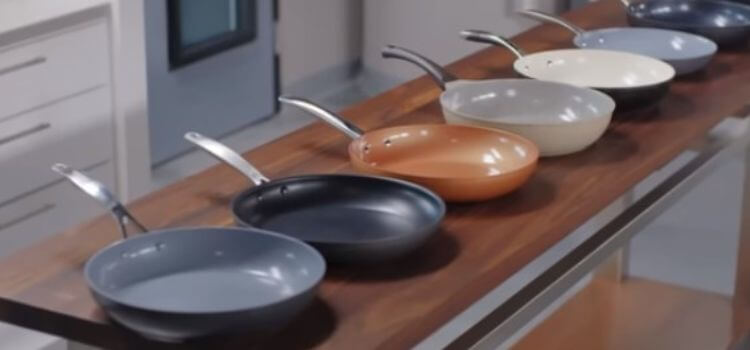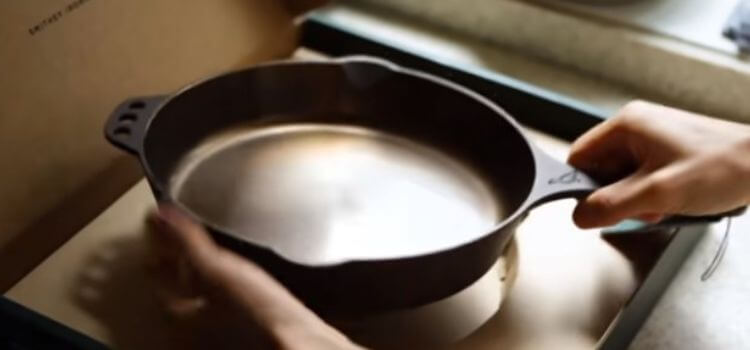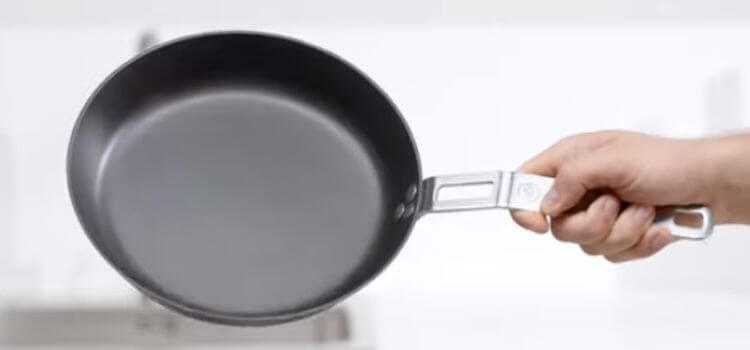As an Amazon Associate, I earn from qualifying purchases.
As an Amazon Associate, I earn from qualifying purchases
Introduction:
When it comes to cooking on an electric coil stove, choosing the right pans can make a world of difference in your culinary experience. These stovetops are known for their reliability and even heat distribution, but to fully leverage their potential, you’ll want the best pans that can handle the job. In this guide, we’ll explore the top choices in cookware that not only work exceptionally well on electric coil stoves but also enhance your cooking skills.

How To Choose the Best Pans For Electric Coil Stoves:
Choosing the best pans for those of us with electric coil stoves in our kitchens can be challenging. That’s why it always pays to do the research. Knowing which frying pans to use is crucial when using an electric burner. What kinds of frying pans are available to you today? Today, we show you what types of frying pans work nicely when you want to make delicious dinners without fail.
What makes the most excellent fry pans for an electric coil stove so important?
We just got new frying pans, and I thoroughly researched them before purchasing. It may not appear significant, but it is. For the most part, all frying pans are the same. Particularly for individuals of you who own electric stoves, they aren’t
As an essential culinary tool, frying pans are a must-have. Also, they are seen as necessary in many homes, restaurants, and cafes for making a balanced and tasty meal.
Whether you’re updating your current set of pans or putting together your first kitchen in a new place, we’re happy to offer our advice on which electric stove pans are the most suitable. So now you know how to pick the best pan for the job, whether it’s made of carbon steel or stainless steel.
Important Considerations for Choosing the Best Electric Coil Stove Pans:
While shopping for the ideal frying pan, it’s essential to remember the kind of hob you have. We utilize a central hob and a countertop induction hob, for example.
Even though we have to use separate pans for it compared to our central stove, we love it for many of our dishes. Induction cooktops heat food using a different principle than conventional gas or electric stovetops.
We were amazed by how quickly our induction top heated and cooked dishes. When you set them on the hob, a magnetic field around the coil generates the current that runs through the pans.
Also, the magnetic field travels down the sides and bottom of the pan after passing through its metal. The pan will then become hot, and the food within will cook. The presence of iron within the stainless steel is what gives it its magnetic properties. Induction cooktops are compatible with ceramic-clad and enamelled cookware as well.
To compare gas and electric stovetops, they bring the pan into direct contact with the burner or heating source. If you’re looking for the ideal frying pan, your options include steel, magnetic stainless steel, cast iron, or stainless steel.
Your budget is the deciding factor.
Of course, your money is also a factor to consider when selecting a frying pan, as it is with most things in life. Remember that cheaper pans may bend, dent, and scratch more easily than more expensive ones.
Limit your options if your budget is limited. Researching and benchmarking your selections is much more critical. Before making a final decision, check out the features and functionality.
Don’t ever let yourself become overwhelmed by choices. Alternatively, pick out up to three pans that work for you and go from there.
Your Favorite Recipe Types:
It’s wise to consider your preferred cuisine as well. Do you enjoy deep-fried items, for instance? What about meals that are just gently browned? The foods you cook dictate the kind of frying pan you need.
Material preferences for frying and searing include cast iron, stainless steel, and carbon steel. A nonstick frying pan is the way to go if you frequently use it to make pancakes, eggs, or delicate, exquisite fish.
Pan Size and Weight:
Consequently, getting a frying pan that’s both heavy and the correct size is essential. Whether you need a 12- or 10-inch pan for most of your cooking needs is entirely up to you.
The weight is considered differently depending on who is using the pan. Cast iron pans tend to be heavier; thus, some people prefer carbon steel instead. However, I like to use pans and pots that are light when I’m cooking.
Our favourite kitchenware investment was a set of Calphalon cookware that we made a few years ago. They are the greatest, but also heavier than other frying pans.
What to Look for When Purchasing Frying Pans for Electric Coil Ranges:
Steel is typically the first material considered when looking for the best pans for electric stoves. We also favor stainless. At least 10% chromium is present in this iron-base alloy. Carbon, manganese, nickel, and some other elements are also present.
Chromate coatings can protect against corrosion. The addition of nickel will strengthen the metal in the meantime. In addition to making the pan less magnetic, it will also make it shine better.
Stainless Cookware:
One of the most excellent materials for a frying pan is ceramic. Notable qualities of the top ceramic fry pans include portability, longevity, ease of cleaning, affordability, etc.

pros and cons:
PROS
CONS
Ceramic Cookware:
Ceramic is also highly recommended for use in frying pans. Lightweight, long-lasting, easy-to-clean, reasonably priced, etc., are some of the most renowned characteristics of the top ceramic fry pans.
After that, the ceramic fry pan can cook various dishes. Furthermore, they work with multiple stovetops, including gas, induction, and more.

The Pros and Cons:
PROS
CONS
I love my ceramic frying pan and often reach for it when cooking. They are more decorative and colorful as well.
What I enjoy most about them is that they are risk-free and don’t release toxic chemicals like PFOA or PTFE. Plus, unlike Teflon-coated pans, they don’t scratch and last much longer.
Cast iron cookware:
A mixture of iron and carbon formed in molds makes cast iron. Silicon, carbon, and other elements comprise at least 1-3%. Cast iron is exceptionally long-lasting because of its exceptional heat retention properties. When it’s seasoned properly, it also becomes nonstick.
However, there are many other ways to put cast-iron drip pans designed for reasonable use for electric stoves. They work wonderfully with induction cooktops, gas stoves, ovens, ceramic glass tops, grills, and fire pits.

The Pros and Cons:
PROS
CONS
The weight of our cast-iron cookware is what we dislike most about it, although we have several items. Aside from that, they cook uniformly and completely, and their quality improves with age and battering.
The many advantages of cast iron cookware include its durability, affordability, versatility, resistance to heat transfer, and ability to withstand high temperatures. It is the best frying, baking, braising, sautéing, and searing method.
The cast-iron pan is excellent, but remembers, it’s solely suitable for cooking eggs. Whatever dish has acid in it is that kind of meal. If you cook acidic foods on a too-hot pan, the seasoning will be stripped off, and the food may taste metallic.
If you want to cook in the great outdoors, whether at a campsite or in your garden, this plan is for you. Cast iron is the way to go if you want to make delicious food.
Carbon Steel Cookware:
Carbon steel is the ideal material for pans used on electric stoves. But carbon steel might be the way to go if you want a pan that won’t stick. Compared to cast iron, carbon typically has a softer, smoother feel.
Also, there is less than 1% carbon in the carbon steel occasionally used to make cookware. Iron and other large metal sheets often make up the remaining 30%. Despite carbon steel’s widespread usage in commercial kitchens, many home cooks still like this material for their hob and ovenware needs.
Carbon steel cookware has several uses, but what exactly are they? There are many more methods than just sautéing, broiling, browning, searing, sautéing on the hob, and baking!

The Pros and Cons:
PROS
CONS
When correctly seasoned, carbon steel becomes a nonstick pan that retains heat exceptionally well, lasts a long time, and is ideal for heavy use. This cookware is versatile whether you’re using an electric, gas, ceramic, induction, or even a barbecue or campfire.
Final comments:
You can use this data to determine the best times to replenish or upgrade your cookware. And hope this will be a helpful review to choose your cookware.
Amazon and the Amazon logo are trademarks of Amazon.com, Inc. or its affiliates.
Leave a Reply